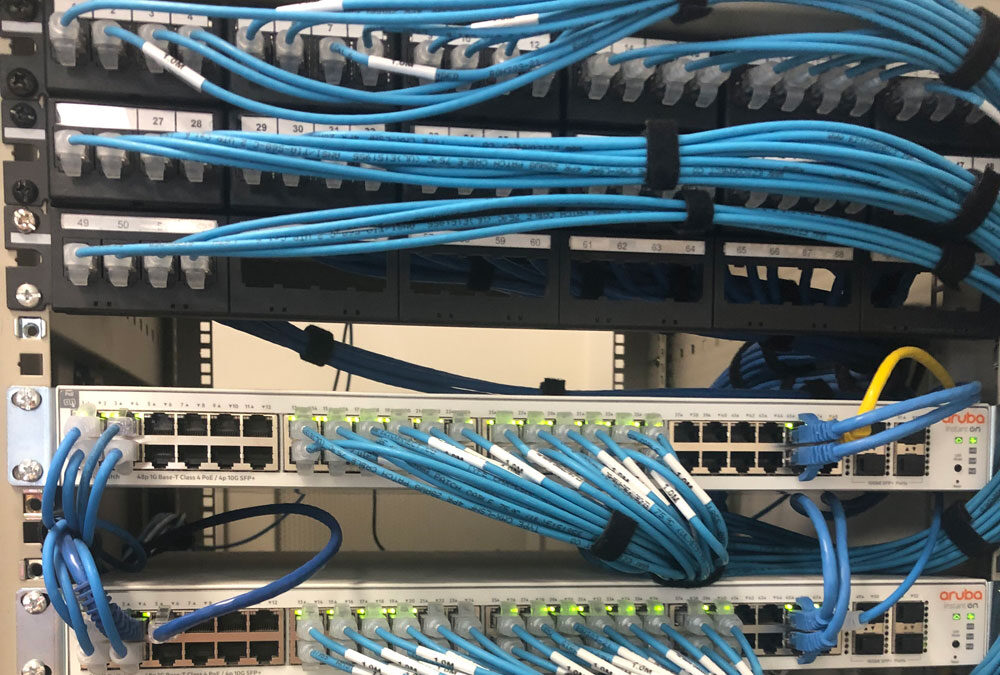In today’s hyper-connected world, cyber security has become a major talking point and a topic widely recognisable by Australian businesses. With organisations relying heavily on digital infrastructure, a network vulnerability can lead to disastrous consequences. In 2021 – 22 FY, the ACSA reported there was an average increase of 14 per cent in cost per cybercrime report to over $39,000 for small businesses, $88,000 for medium businesses, and over $62,000 for large businesses.
Understanding Network Vulnerabilities
Network vulnerabilities refer to weaknesses in a network’s security infrastructure that can be exploited by cybercriminals. These vulnerabilities can exist at various levels, from the hardware and software to human error. One common type of network vulnerability is the misconfiguration of software or applications.
Misconfigurations occur when software or systems are set up improperly, leaving security holes that can be exploited. These can range from weak password policies to incorrect access controls, firewall rules, or not applying software updates promptly.
Key Benefits of Network Vulnerability Assessment
Risk Mitigation: By identifying vulnerabilities in advance, organisations can take steps to mitigate them before cybercriminals exploit them. This proactive approach reduces the risk of data breaches and financial losses.
Compliance and Regulation: Many industries have stringent cyber security regulations or cyber insurance requirements. A network vulnerability assessment can help organisations comply with these standards and reduce their cyber insurance premium.
Enhanced Security: A thorough assessment provides a comprehensive view of network weaknesses, allowing organisations to bolster their security measures and prioritise high risk areas.
Cost Savings: It is often more cost-effective to invest in network vulnerability assessment and remediation than to deal with the aftermath of a cyberattack. Recovery costs, legal fees, and damage to reputation can be substantial.
Improved Incident Response: In the event of a security breach, organisations with a history of vulnerability assessment are better prepared to respond swiftly and effectively, minimising the impact of the breach.
Conducting A Network Vulnerability Assessment
Define Objectives: Clearly define the scope and objectives of the assessment. What are you trying to achieve? What assets are you evaluating? Understanding these aspects will guide the entire process.
Asset Inventory: Maintain an up-to-date inventory of all network assets, including hardware, software, and configurations. This helps in identifying what needs to be assessed.
Prepare For Scanning: Scans cover the entire network infrastructure, including servers, workstations, and network devices. Ensure your staff bring any devices into the office on the day and plan accordingly.
Document Findings: Your BITS technician will provide detailed records of assessment results, including vulnerabilities, their severity, and recommended remediation actions. Keep these securely on file.
Remediation and Verification: Ensure you have a plan to action remediation of vulnerabilities identified by your BITS technician. We recommend having a verification method in place to ensure the issues have been resolved.
Conclusion
Network vulnerability assessments are an integral part of modern cyber security practices. It helps organisations stay one step ahead of cyber threats by proactively identifying and addressing vulnerabilities in their network infrastructure. The benefits including risk reduction, compliance adherence, cost savings, and enhanced security. By following best practices and committing to regular assessments, organisations can strengthen their cyber security posture and protect their valuable data and reputation in an increasingly interconnected world.



